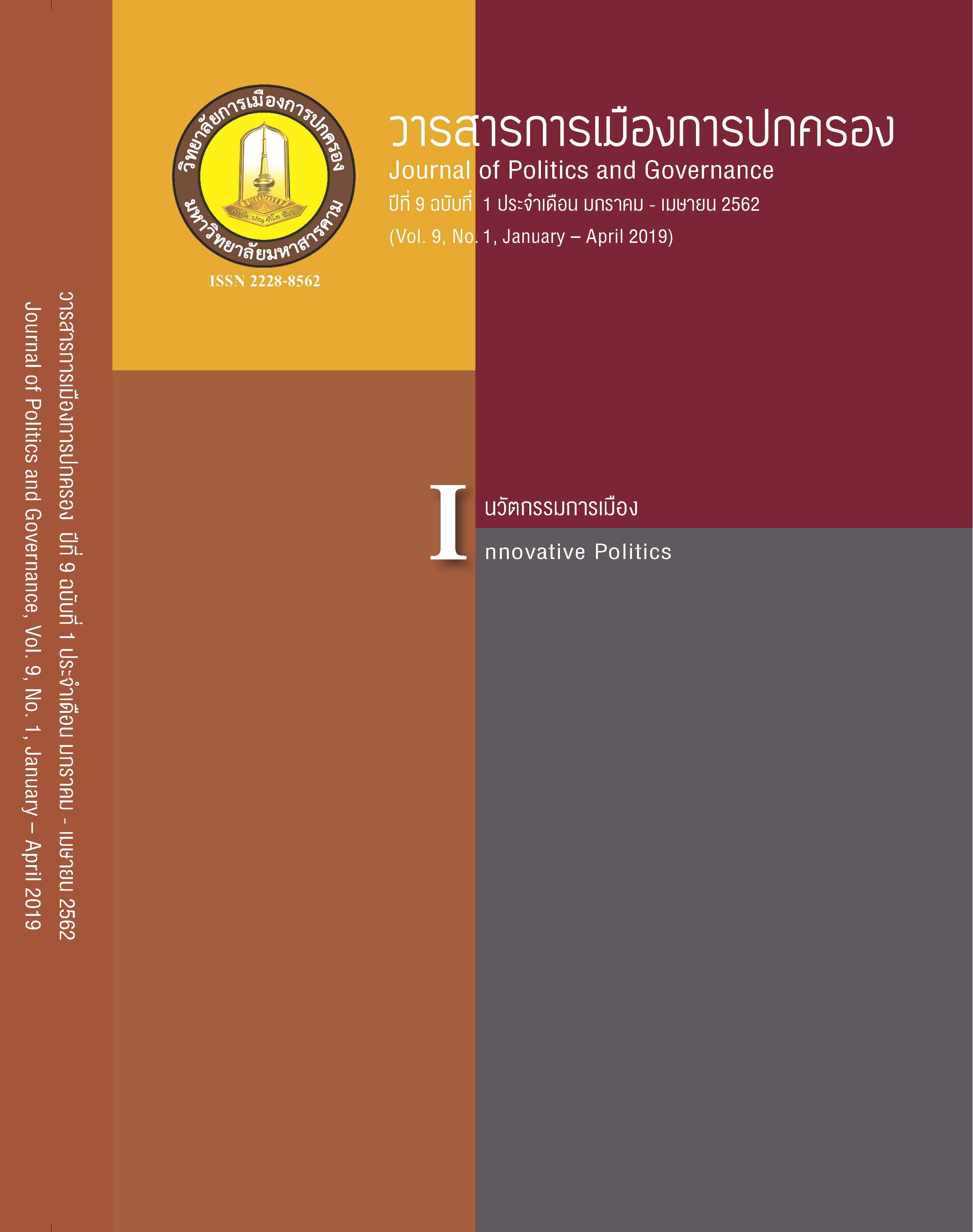The Retention of Contracted Lecturers of Public Universities in the Northeastern Thailand
Main Article Content
Abstract
The objective of this study was to present ways or methods for the retention of contracted lecturers in public universities. This research was a mixed methodology. Data was collected by questionnaires to 300 representatives (Khon Kaen University, Mahasarakham University and Ubon Ratchathani University) and by in-depth interview from 7 key informants which were the experts. Data was collected under simple random sampling. The data was analyzed using multiple linear regression and content analysis. Results showed the Retention of contracted lecturers which were: salary and welfare, leader, task and university policy and administration. Described changes in the retention of contracted lecturers in public universities 62% and found that the most impact factor to retention of contracted lecturers was university policy and administration (0.359). The guideline for maintaining the contracted lecturers in public universities is the DIY model. It consists of decreasing push factors university employees to resign. Increasing pull factors university employees to retain. And to yield each other the possibility of management.
Article Details
References
ราชภัฎเลย.
วัฒนะ พรหมเพชร และจิระวัฒน์ ตันสกุล. (2554). ปัจจัยที่ส่งผลต่อความผูกพันต่อองค์กรของพนักงาน มหาวิทยาลัยตำแหน่งวิชาการ มหาวิทยาลัยสงขลานครินทร์. วารสารศึกษาศาสตร์ มหาวิทยาลัยสงขลานครินทร์ วิทยาเขตปัตตานี . 22(3), 346-347.
สมิต สัชฌุกร. (2550). การธำรงรักษาบุคลากรที่มีคุณภาพ. วารสารส่งเสริมเทคโนโลยี. กรุงเทพฯ: สารสนเทศการจัดการ.
สุมิตร สุวรรณ. (2552). การจัดระบบเงินเดือนและสวัสดิการเพื่อการพัฒนาองค์กรสู่มหาวิทยาลัยในกำกับของรัฐ: บทสะท้อนจากพนักงานมหาวิทยาลัย. สถาบันวิจัยและพัฒนาแห่งมหาวิทยาลัยเกษตรศาสตร์.
อรจรีย์ ณ ตะกั่วทุ่ง. (2549). การบริหารทรัพยากรบุคคลเชิงกลยุทธ์. กรุงเทพฯ: เอ็กซเปอร์เน็ท.
Analoui, F. (2007). Strategic Human Resource Management. Thomson, Australia
Cappelli, R. (2002). Understanding the determinants of employer use of selection methods. Personnel Psychology , 56 , 103 – 124 .
Cowie, J. (2004). Putting Business Research methods. Business Education Support Team Workshop at Queen Margaret’s University College. Edinburgh: Queen Margaret’s University College.
Crandall, N.F. and M.J. Wallace. (2002). HR strategy in virtual organisations. In Heneman and Greenberger. op. cit., pp.33-35.
Dibble, S. (1999). Keeping your valuable employees. New York: John Wiley and Sons.
Griffeth, R. W., P. W. Hom and S. Gaertner. (2000). A Meta-Analysis of Antecedents and Correlates of Wmployee Turnover: Update, Moderator Test, and Research Implications for the Next Milennium. Journal of Management 26 (3), 463-468.
Herzberg, F. (1968). One More Time: How Do You Motivate Employees?. Harvard Business Review 46 (1), 53-62.
Mathis, R. L. and Jackson, J. H. (2004). Human resource management. 10th ed. Singapore: Seng Lee Press.
______. (2007). Human resource management: Essential Perspectives. 4th ed. Thomson South-Western, a part of The Thomson Corporation Thomson, Canada.
Mondy, R. W., Noe, R. M., and Mondy, J. B. (2005). Human resource management. 9th ed. New Jersey: Pearson Education.


